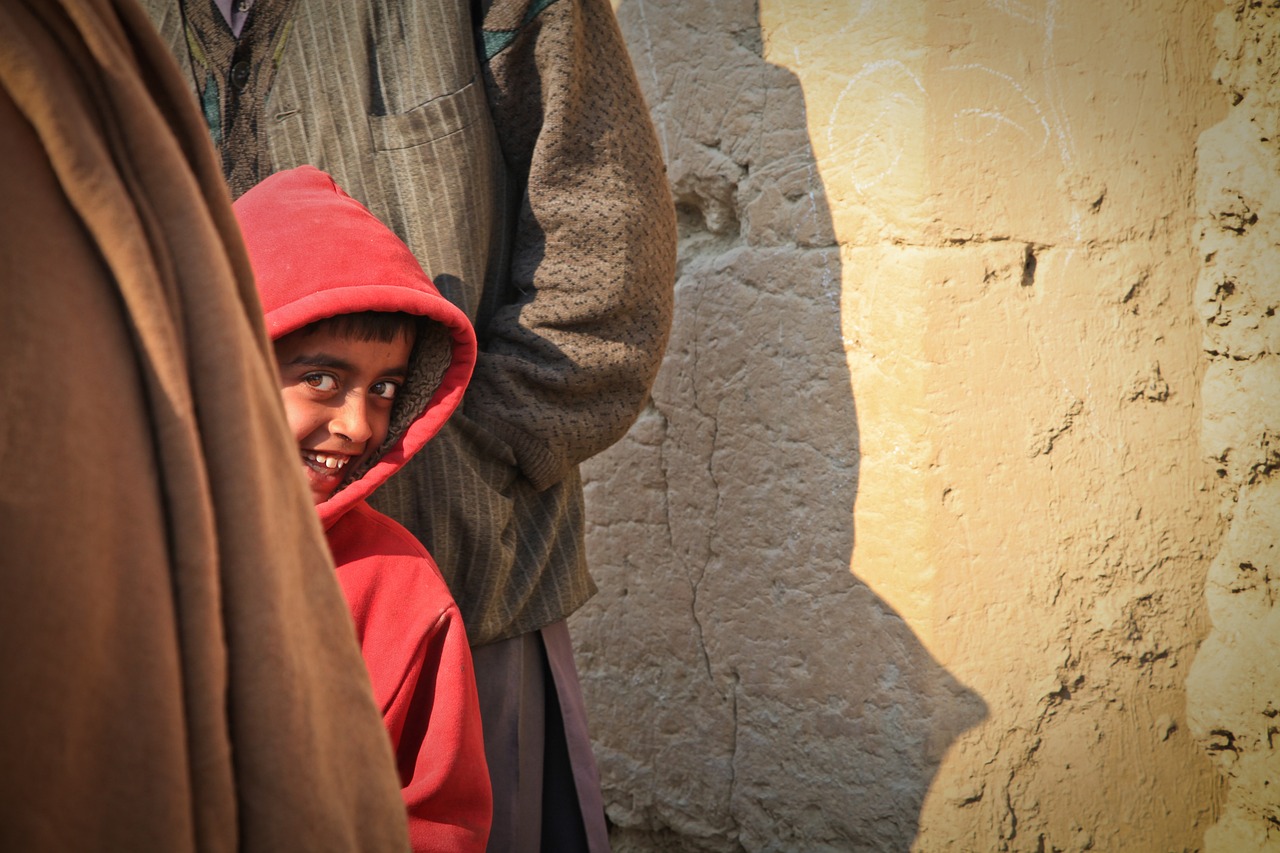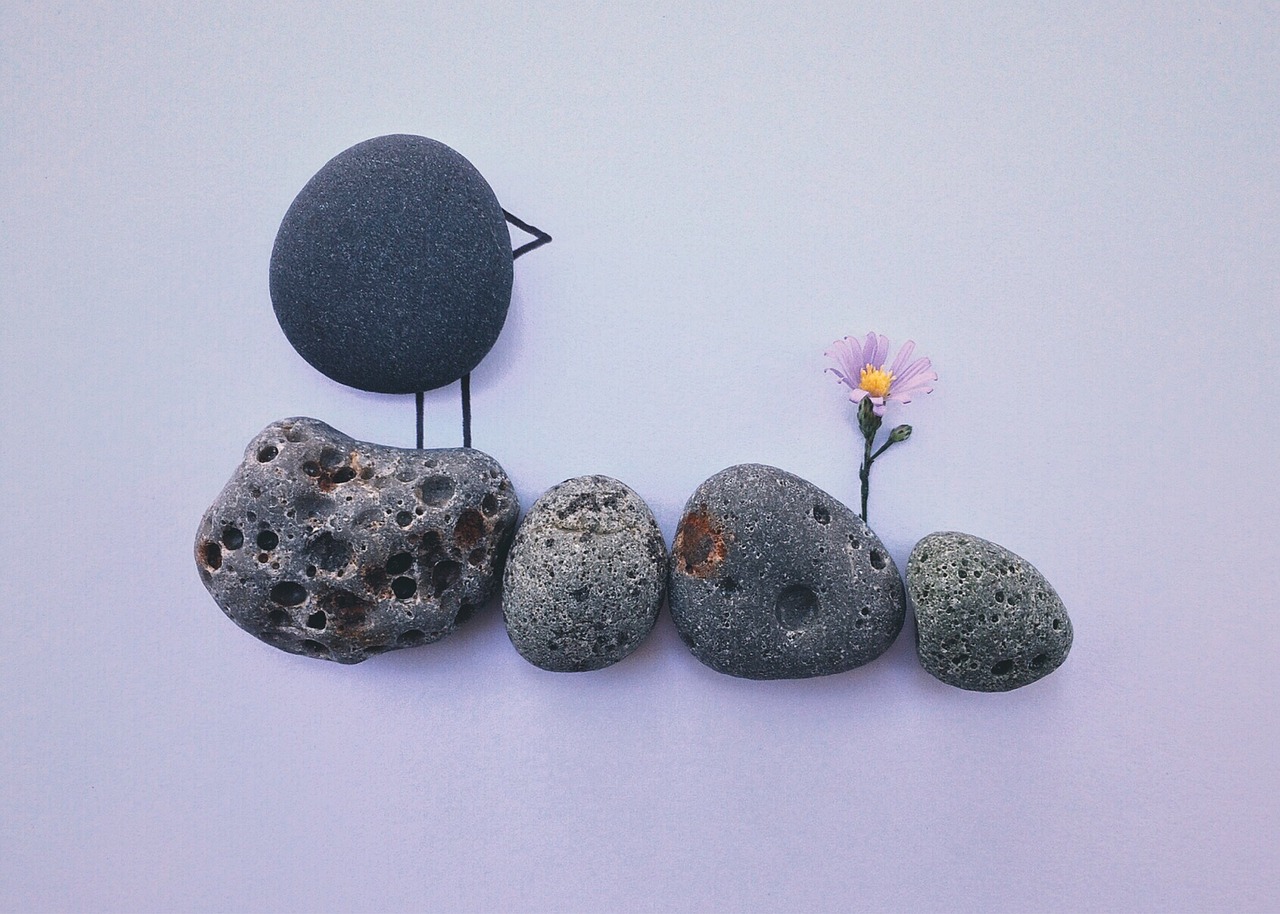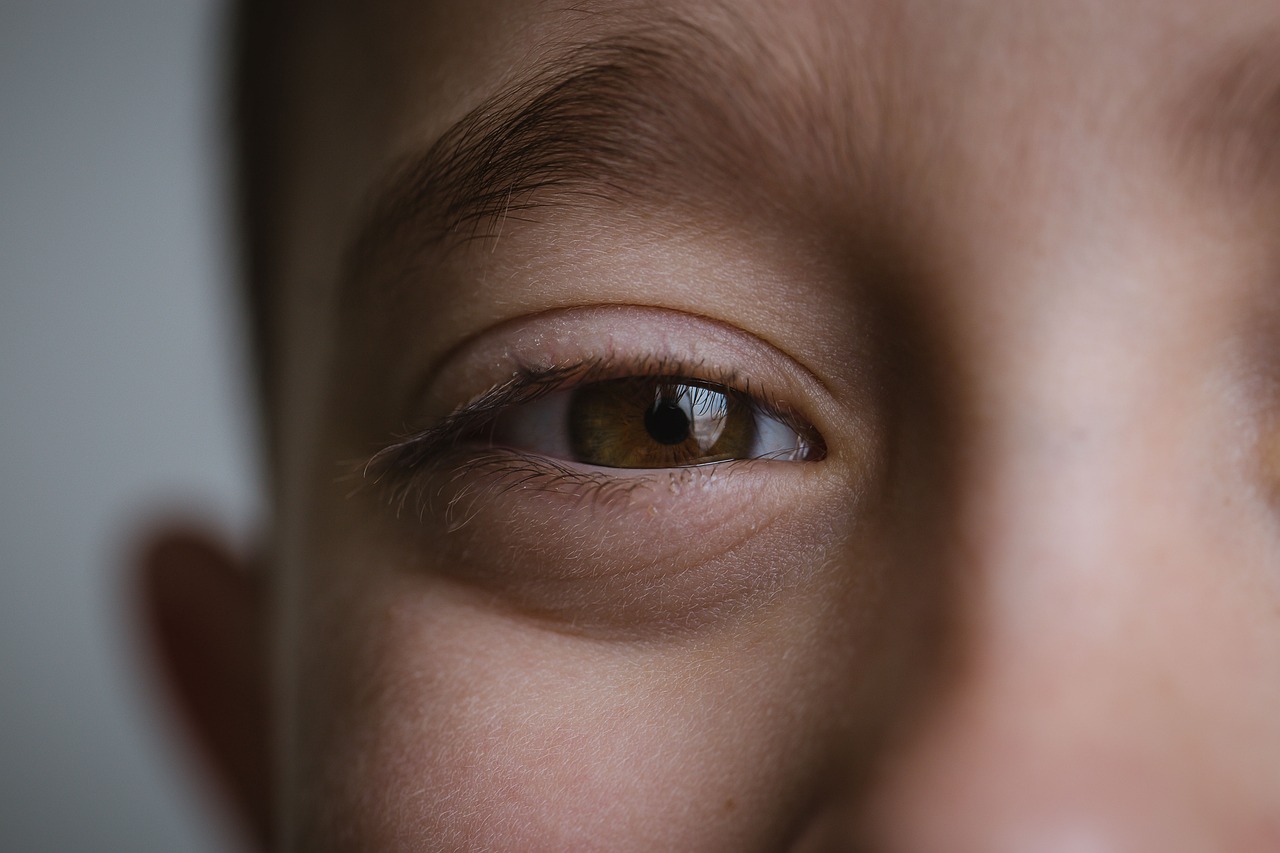Doodle and Craft: Combining Drawing Skills with Crafts for Kids
In a world bursting with colors and creativity, the fusion of doodling and crafting opens up a treasure trove of artistic possibilities for children. Imagine a space where your child's imagination can run wild, where crayons and scissors become tools of exploration and self-expression. This article dives deep into the exciting intersection of drawing and crafting, showcasing how these two activities not only entertain but also enhance artistic skills. By engaging in doodling and crafting, kids can develop their creativity, fine motor skills, and confidence, all while having a blast!
Doodling is more than just a mindless activity; it’s a gateway to unleashing creativity! When kids pick up a pencil and let their imaginations flow onto the paper, they are not just drawing random shapes. They are fostering their creativity and enhancing their fine motor skills. Doodling encourages children to think outside the box and express their thoughts visually. Have you ever noticed how a simple doodle can spark a whole story in a child's mind? This spontaneous drawing can stimulate imagination and make children feel more confident in their artistic abilities. In fact, studies have shown that doodling can help improve focus and retention, making it a perfect companion for learning. So, next time you see your child doodling away, remember that they are not just playing; they are building a foundation for their creative future!
Now that we've established the magic of doodling, let’s explore some inspiring craft ideas that incorporate drawing. Imagine your child transforming their doodles into vibrant crafts! Here are some fun activities that will ignite their creativity:
- Doodle Collage: Encourage your child to create a collage using their doodles. They can cut out their favorite drawings and glue them onto a canvas or a large piece of paper.
- DIY Greeting Cards: Kids can design their own greeting cards by doodling on blank cards. This not only allows them to express their creativity but also gives them a chance to share their art with friends and family.
- Storybook Creation: Let your child illustrate their own storybook by combining doodles with crafting. They can draw characters and scenes, then bind the pages together to create a unique storybook.
These activities not only encourage children to express themselves through both drawing and crafting but also help them develop their artistic skills in a fun and engaging way.
Before diving headfirst into a crafting project, drawing can serve as a fantastic warm-up! Think of it as stretching before a workout; it gets the creative juices flowing. By sketching out their ideas, children can visualize what they want to create. This pre-craft activity not only enhances the overall crafting experience but also leads to better outcomes. When kids take the time to draw their concepts, they are more likely to stay focused and organized during the crafting process. It’s like having a roadmap to guide them on their artistic journey!
Sketching designs is an essential part of planning a craft project. It helps children visualize their projects and understand the steps needed to bring their ideas to life. When kids sketch their designs, they can experiment with colors, shapes, and layouts before committing to the actual craft. This planning stage is crucial as it allows them to refine their ideas and make adjustments, resulting in a more polished final product. Plus, it instills a sense of achievement when they see their sketches transform into tangible crafts!
Encouraging kids to draw their own ideas can lead to more personalized and creative projects. Original sketches inspire unique crafts that reflect a child's personality and interests. This process not only boosts their confidence but also fosters a sense of ownership over their creations. When children see their doodles come to life in their crafts, it reinforces the idea that their imagination is a powerful tool. So, let them draw freely and watch as their creativity blossoms!
Did you know that certain crafting techniques can actually improve drawing skills? Activities like collage and mixed media can strengthen a child's artistic foundation. For instance, when kids work on a collage, they learn about composition, color theory, and texture. These skills directly translate to their drawing abilities. Similarly, mixed media projects allow children to experiment with different materials, encouraging them to push the boundaries of their creativity. The more they explore, the more confident they become in their artistic expression!
Incorporating doodling and crafting into educational settings can transform the learning experience. These activities can be used to teach various subjects creatively, making education more engaging for children. Imagine a classroom where math problems are solved through drawing diagrams or where history lessons come alive through crafting projects. By integrating art and craft into education, children not only learn the subject matter but also develop critical thinking and problem-solving skills.
Art projects can effectively convey educational concepts in a way that resonates with children. For example, creating a timeline of historical events through drawings and crafts can make learning more interactive and memorable. When kids engage with the material creatively, they are more likely to retain the information. Here are a few examples of art projects that blend art and education:
- Science Dioramas: Kids can create dioramas to illustrate scientific concepts, such as ecosystems or the solar system.
- Math Art: Incorporating geometric shapes into art projects helps children understand math concepts visually.
- Historical Reenactments: Crafting costumes and props allows children to immerse themselves in history.
Group projects can enhance social skills and teamwork among children. When kids collaborate on doodling and crafting activities, they learn to communicate their ideas, share materials, and appreciate each other's contributions. This sense of community is invaluable as it fosters friendships and encourages a supportive environment for creativity. Imagine a group of kids working together to create a giant mural—each child adding their unique touch. The result is a beautiful tapestry of creativity that reflects their collective imagination!
- What age is appropriate for doodling and crafting activities? Doodling and crafting can be enjoyed by children of all ages. It’s never too early to start exploring creativity!
- How can I encourage my child to doodle more? Provide them with plenty of drawing materials and create a relaxed environment where they feel free to express themselves.
- Are there any specific crafts that enhance drawing skills? Yes! Activities like collage, mixed media, and sketching before crafting can significantly improve drawing skills.

The Benefits of Doodling for Kids
Doodling is often seen as a simple, mindless activity, but it holds a treasure trove of benefits for children. Imagine a world where every scribble and swirl on paper is a step towards enhancing creativity and fine motor skills. When kids doodle, they are not just passing time; they are engaging in a form of self-expression that can significantly boost their confidence in their artistic abilities. This spontaneous form of drawing allows their imaginations to run wild, creating a playground for ideas to flourish.
One of the most remarkable aspects of doodling is its ability to foster creativity. When children are given the freedom to draw whatever comes to mind, they break free from the constraints of structured art projects. This unstructured approach encourages them to explore their thoughts and feelings, leading to a more profound understanding of their own creativity. As they doodle, kids often discover new ways to represent their ideas, which can be incredibly empowering.
Additionally, doodling can significantly improve fine motor skills. The act of holding a pencil or crayon and making various strokes helps strengthen the small muscles in their hands and fingers. This is essential for tasks like writing, buttoning shirts, or tying shoelaces. As children practice doodling, they are unknowingly honing these skills, which will serve them well in their daily lives.
Moreover, doodling can serve as a stress-reliever. Just think about it: when kids are feeling overwhelmed or anxious, putting pencil to paper can be incredibly calming. It allows them to channel their emotions into art instead of bottling them up. This therapeutic aspect of doodling can lead to improved mental well-being, helping children navigate their feelings more effectively.
To sum it up, here are some key benefits of doodling for kids:
- Enhances Creativity: Frees up the mind to explore new ideas.
- Improves Fine Motor Skills: Strengthens hand muscles essential for writing.
- Boosts Confidence: Encourages self-expression and validation of artistic abilities.
- Acts as a Stress-Reliever: Provides a calming outlet for emotions.
In conclusion, doodling is not just a pastime; it is a powerful tool for development. By encouraging children to embrace their doodles, we can help them unlock their potential, nurture their creativity, and build essential skills that will serve them throughout their lives. So, the next time you see a child doodling, remember that they are not just making a mess; they are crafting their future!

When it comes to igniting the spark of creativity in young minds, the combination of drawing and crafting opens up a world of possibilities. Kids love to express themselves, and what better way to do it than through fun and engaging projects that blend these two artistic avenues? Imagine a child sitting at a table, surrounded by colorful papers, markers, and an array of crafting materials, ready to embark on a creative journey! In this section, we will explore some inspiring craft ideas that not only encourage children to draw but also allow them to transform their sketches into tangible masterpieces.
One fantastic way to inspire creativity is through DIY Greeting Cards. Kids can start by doodling their designs on plain card stock. Encourage them to think about the occasion—whether it's a birthday, holiday, or just a simple "thank you." After sketching their ideas, they can add embellishments like stickers, glitter, or even their own drawings to enhance their cards. This project not only fosters artistic skills but also teaches kids the joy of giving and sharing their creativity with others. Imagine the smiles on the faces of friends and family when they receive a handmade card!
Another exciting craft idea is creating Story Stones. This project combines storytelling with artistry. Children can gather smooth stones and use acrylic paints to illustrate characters, animals, or objects on each stone. Once the stones are dry, kids can use them to create their own stories, enhancing both their drawing skills and their narrative abilities. This activity is like turning a blank canvas into a vibrant tale, where each stone adds a new layer to their imaginative world.
For a more interactive experience, consider Collaborative Murals. Gather a large sheet of paper or canvas and let the kids work together to create a mural. They can start by sketching different sections of the mural, which can be themed around nature, fantasy, or even their favorite stories. This not only promotes teamwork but also allows each child to contribute their unique artistic style. The end result is a colorful tapestry of creativity that brings everyone together, showcasing their combined talents.
Don't forget about Nature Art! Take a trip outside to collect leaves, flowers, and twigs. Once back indoors, children can use these natural materials to create beautiful collages or even paint over them to create prints. This project teaches kids to appreciate nature while expressing themselves artistically. It's like bringing the beauty of the outdoors into their creative space, merging the natural world with their imaginative ideas.
Lastly, Personalized T-Shirts can be a hit! Kids can design their own shirts using fabric markers or paints. They can start with a simple doodle or a favorite quote and turn it into wearable art. This not only boosts their confidence but also allows them to showcase their creativity wherever they go. Imagine the pride they’ll feel wearing a shirt that they designed themselves!
These craft ideas are just the tip of the iceberg. By encouraging children to draw and craft, we are not only enhancing their artistic skills but also fostering a love for creativity that can last a lifetime. So, gather your materials, unleash your imagination, and let the crafting adventures begin!
- What age group is suitable for these craft ideas? These craft ideas are ideal for children aged 5 and up, but younger kids can also participate with adult supervision.
- Do I need special materials for these crafts? Most of these crafts can be done with common household items and basic art supplies, making them accessible and easy to set up.
- How can I encourage my child to be more creative? Provide a variety of materials, give them freedom to explore their ideas, and celebrate their creations to boost their confidence.

Before diving headfirst into the world of crafts, drawing can serve as an essential warm-up for young artists. Think of it as a stretching routine before a big game; it gets the creative juices flowing and prepares the mind for the exciting journey ahead. When children pick up a pencil or crayon to sketch, they are not just doodling—they are engaging in a vital process that enhances their overall crafting experience. It’s like laying the foundation of a house; without a solid base, the structure may falter.
By encouraging kids to draw their ideas before they start crafting, we open the door to a world of possibilities. This pre-craft activity allows them to explore various concepts, shapes, and colors without the pressure of making something 'perfect.' They can experiment freely, which is crucial for developing their artistic confidence. Imagine a child sketching a whimsical creature or a vibrant landscape; this act of creation not only warms up their hands but also ignites their imagination.
Moreover, drawing can significantly enhance the crafting process in several ways:
- Visualization: Sketching helps kids visualize their projects, providing a clear roadmap for their crafting journey. When they can see their ideas on paper, they are more likely to execute them successfully.
- Problem-Solving: Challenges often arise during crafting, but having a drawing as a reference can help children troubleshoot and adapt their plans, fostering critical thinking skills.
- Creativity Boost: The act of drawing can spark new ideas and lead to unexpected creative solutions, making the crafting experience even more enjoyable.
In essence, drawing serves as a bridge between imagination and reality. It allows children to express their thoughts visually, paving the way for a more fulfilling crafting experience. So, next time your little one is gearing up for a craft project, remind them to grab a sketchbook first. It’s not just about making something pretty; it’s about embracing the journey of creation—one sketch at a time!

When it comes to crafting, a little bit of planning can go a long way, and that’s where sketches come into play. Imagine setting out on a road trip without a map—sure, you might discover some interesting detours, but you could also end up lost or missing out on the best sights. Similarly, sketches act as your creative roadmap, guiding young artists through the crafting process. By taking the time to sketch their ideas, kids can visualize their projects and make thoughtful decisions about how to bring their concepts to life.
Sketching serves as a crucial first step in the crafting journey. It encourages children to think critically about their designs, helping them to consider aspects such as color, shape, and materials. For instance, if a child wants to create a paper mache dinosaur, a quick sketch can help them decide on the size, texture, and the colors they might want to use. This kind of foresight not only improves the final product but also instills a sense of ownership and pride in their work.
Moreover, sketches allow for experimentation without the mess. Kids can play around with different ideas on paper before committing to any materials. They can ask themselves questions like, “What if I made the tail longer?” or “How would it look if I used glitter instead of paint?” This freedom to explore can lead to unexpected and delightful outcomes, making the crafting experience even more rewarding.
In addition to enhancing creativity, sketching also helps with problem-solving. If a child encounters a challenge during their crafting, such as how to attach two pieces together, they can refer back to their sketches. This visual reference can spark new ideas and solutions, turning potential frustrations into triumphs. It’s like having a brainstorming session right there on the page!
To emphasize the importance of sketching in craft planning, consider the following benefits:
- Visualization: Helps children see their ideas clearly.
- Experimentation: Encourages trying out different concepts without waste.
- Problem-solving: Assists in overcoming challenges by providing a reference point.
- Ownership: Fosters a sense of pride and accomplishment in their creations.
In conclusion, using sketches for craft planning not only enhances the crafting experience but also builds essential skills in young artists. It’s a simple yet effective way to transform a vague idea into a tangible masterpiece, ensuring that the journey from doodle to craft is as enjoyable as the final result.
Q: Why is sketching important before starting a craft project?
A: Sketching helps children visualize their ideas, plan their projects, and solve potential problems before they begin crafting.
Q: What materials are best for sketching?
A: Simple materials like pencils, colored pencils, or markers on plain paper are perfect for sketching ideas.
Q: Can sketching improve a child's artistic skills?
A: Absolutely! Sketching encourages creativity, enhances fine motor skills, and boosts confidence in their artistic abilities.
Q: How can parents encourage their children to sketch?
A: Provide them with sketchbooks, set aside time for drawing, and participate in the activity together to make it more enjoyable.

Encouraging children to draw their ideas is a fantastic way to foster originality and creativity. When kids pick up a pencil or a crayon, they unlock a world of possibilities where their imagination can run wild. Drawing isn't just about putting lines on paper; it's about expressing thoughts, feelings, and unique perspectives. Think of it as a gateway to their inner artist, allowing them to create something that is truly their own.
One of the most effective ways to promote originality is by creating a safe space where children feel free to explore their artistic instincts. This means providing them with a variety of drawing materials—colored pencils, markers, and even digital drawing tablets—so they can experiment without the fear of making mistakes. After all, every great artist started with a simple doodle! Encourage them to let their ideas flow without worrying about perfection; the goal is to enjoy the process rather than focus solely on the final product.
Moreover, drawing can serve as a powerful tool for brainstorming before diving into a craft project. For instance, if a child wants to create a handmade card, they can start by sketching out their design. This not only helps them visualize their project but also gives them the opportunity to play around with different elements like colors, shapes, and layouts. By sketching, they're not just planning; they're also engaging in a form of self-expression that can lead to more personalized and imaginative crafts.
To further enhance this creative process, parents and educators can introduce activities that encourage children to draw from their own experiences or interests. For example, you might ask them to illustrate their favorite memory or create a character based on their favorite book. This kind of personal connection to their artwork can spark a deeper sense of originality and pride in their creations. Additionally, sharing their drawings with peers can provide valuable feedback and inspiration, helping them to refine their ideas and push the boundaries of their creativity.
Ultimately, the key to encouraging originality through drawing is to celebrate each child's unique artistic voice. Whether it's through a simple doodle or an elaborate craft project, nurturing their ability to express themselves is invaluable. So, let them draw freely, experiment boldly, and watch as their creativity blossoms into something truly extraordinary!
- How can I encourage my child to draw more? Start by providing them with a variety of drawing materials and creating a comfortable space for them to express themselves. Encourage them to draw what they love!
- What if my child feels discouraged about their drawing skills? Remind them that art is subjective and that the process is more important than the outcome. Celebrate their efforts and creativity instead of focusing on perfection.
- Are there specific drawing activities that can enhance creativity? Yes! Activities like drawing prompts, themed sketch challenges, or collaborative drawing games can stimulate their imagination and encourage them to think outside the box.

When it comes to nurturing a child's artistic abilities, combining drawing with crafting can be a game-changer. Imagine this: a child starts with a simple doodle, perhaps a whimsical tree with a smiley face, and then transforms that sketch into a three-dimensional craft project. This seamless transition between drawing and crafting not only enhances creativity but also significantly improves drawing skills. The act of crafting provides a tactile experience that complements the visual nature of drawing, allowing children to explore their artistic expression in multifaceted ways.
One of the most effective crafting techniques that can enhance drawing skills is collage making. In a collage, children can cut out various shapes, colors, and textures from magazines or colored paper and arrange them into a coherent piece of art. This technique encourages them to think about composition, balance, and color theory—elements that are crucial in drawing. As they create, they can refer back to their sketches, allowing their drawings to evolve into something larger and more dynamic. Not only does this process reinforce their drawing skills, but it also helps them understand how different elements can work together to create a unified artwork.
Another fantastic technique is mixed media art. By combining different materials—like paints, pencils, and even fabric—children can experiment with various textures and styles. For instance, they might start with a pencil drawing, then layer on watercolor paints, and finish with some fabric cutouts. This not only enriches their artistic vocabulary but also encourages them to take risks in their art. The freedom to explore different mediums allows children to discover what they enjoy most, fostering a deeper connection to their drawing practice.
Additionally, printmaking can serve as an exciting way to enhance drawing skills. Through techniques like stamping or monoprinting, kids can create unique prints that often begin with their drawings. This method teaches them about repetition and variation, as they can create multiple prints from a single drawing, each one slightly different. It’s like taking their doodles on a creative adventure, where they can see their ideas come to life in new and unexpected ways.
Lastly, let’s not forget the power of storytelling through art. Encourage children to draw scenes from their favorite stories or create their own narratives through illustrations. This technique not only enhances their drawing skills but also boosts their imagination and storytelling abilities. They can craft a visual storybook where each page features their drawings, making the process of creating art feel purposeful and engaging.
In summary, the intersection of crafting and drawing offers a rich landscape for artistic development. By incorporating techniques like collage, mixed media, printmaking, and storytelling, children can significantly enhance their drawing skills while having a blast. The key is to keep the process fun and exploratory, allowing their creativity to flourish without the fear of making mistakes.
- Q: How can I encourage my child to draw more?
A: Provide them with a variety of art supplies and a comfortable space to create. Encourage them to doodle freely without pressure. - Q: What are some easy crafts that incorporate drawing?
A: Simple crafts like DIY greeting cards, painted rocks, or decorated picture frames can be great ways to combine drawing and crafting. - Q: How does crafting improve fine motor skills?
A: Activities like cutting, gluing, and assembling crafts require precision and control, which help develop fine motor skills. - Q: Can doodling help with focus and concentration?
A: Yes! Doodling can be a great way to keep the mind engaged and focused, making it easier to absorb information.

When it comes to education, the traditional methods of teaching often fall short in capturing the imagination of young minds. Integrating art and craft into the curriculum can be a game-changer. Not only does it make learning more enjoyable, but it also helps children grasp complex concepts through visual and tactile experiences. Imagine a classroom where math isn't just numbers on a page but becomes a vibrant tapestry of shapes and colors through art projects. This kind of integration fosters a deeper understanding and retention of knowledge.
Art and craft activities can be seamlessly woven into various subjects, making them more relatable and engaging for students. For instance, while studying history, children can create timelines illustrated with drawings and crafts that represent significant events. This not only reinforces their learning but also allows them to express their understanding creatively. The act of creating something with their hands can lead to a more profound appreciation of the subject matter.
Moreover, integrating art into education encourages critical thinking and problem-solving skills. When students are tasked with crafting a project, they must plan, execute, and often troubleshoot along the way. This process mirrors real-world challenges and prepares them for future endeavors. For example, a science lesson on ecosystems can be transformed into a collaborative art project where students build a 3D model of a habitat, using various materials to represent different organisms. This hands-on approach not only solidifies their understanding of the topic but also enhances their ability to work as a team.
Additionally, art integration promotes emotional expression and well-being. In a world where academic pressure can be overwhelming, providing children with a creative outlet can help reduce anxiety and boost self-esteem. Crafting allows them to channel their feelings into something tangible, fostering a sense of accomplishment. This is particularly beneficial for children who may struggle with traditional learning methods, as art offers an alternative way to express their knowledge and creativity.
In terms of practical implementation, teachers can incorporate art and craft in various ways, such as:
- Creating interdisciplinary projects that combine art with subjects like science, math, and history.
- Encouraging students to illustrate their understanding of a topic through drawings, collages, or models.
- Organizing art exhibitions where students can showcase their work, fostering a sense of pride and community.
As educators explore the integration of art and craft in education, it's essential to remember that the goal is not just to create beautiful projects but to enhance the overall learning experience. By embracing creativity, we can inspire a new generation of thinkers, makers, and innovators ready to tackle the challenges of tomorrow.
Q: How can art and craft improve academic performance?
A: Art and craft activities enhance engagement and understanding, allowing students to grasp concepts more effectively. They also develop critical thinking and problem-solving skills.
Q: What subjects can benefit from integrating art and craft?
A: Almost any subject can benefit, including math, science, history, and language arts, by using creative projects to reinforce learning and encourage expression.
Q: Do art and craft activities require a lot of resources?
A: Not necessarily! Many art and craft projects can be done with everyday materials, promoting creativity without the need for expensive supplies.
Q: How can I encourage my child's interest in art and craft?
A: Provide them with opportunities to explore different mediums, engage in collaborative projects, and celebrate their creative efforts, no matter the outcome!

Art projects are not just about splashing paint or gluing glitter; they can serve as powerful tools for teaching various educational concepts. Imagine a classroom where children are not only learning about the solar system through textbooks but are also creating their own models of planets using clay and paint. This hands-on approach makes learning tangible and memorable. By integrating art into education, we can capture the attention of young minds and stimulate their curiosity.
For instance, consider a project where students are tasked with creating a collage that represents their understanding of ecosystems. They can cut out images from magazines, draw their own representations, and even incorporate natural elements like leaves or small twigs. As they assemble their collages, they are not only expressing their creativity but also reinforcing their knowledge of how different organisms interact within their environments. This method of learning allows children to explore concepts in a way that feels personal and engaging.
Furthermore, art projects can be designed to teach mathematical concepts. For example, creating geometric shapes with colored paper can help children understand angles, symmetry, and spatial relationships. As they cut and arrange their shapes, they are practicing their fine motor skills while simultaneously grasping essential math principles. Imagine the excitement of a child who realizes they can create a stunning piece of art while also mastering geometry!
Another excellent example is using art to teach history. Students can create timelines using drawings or paintings that depict significant events. This not only helps them remember the sequence of events but also allows them to visualize history in a way that is engaging and interactive. They can even role-play historical figures while creating their artwork, which adds a layer of depth to their learning experience.
To illustrate how art projects can effectively convey educational concepts, here’s a simple table that outlines a few project ideas along with the concepts they teach:
| Art Project | Concepts Taught |
|---|---|
| Planetary Models | Solar System, Scale, Planet Characteristics |
| Nature Collage | Ecosystems, Biodiversity, Environmental Awareness |
| Geometric Art | Geometry, Shapes, Symmetry |
| Historical Timeline | History, Chronology, Event Significance |
In conclusion, art projects are a fantastic way to teach complex concepts in a fun and engaging manner. By allowing children to express themselves through creativity, we not only enhance their understanding of various subjects but also foster a love for learning. So, the next time you think about incorporating art into your lesson plans, remember that you’re not just adding a splash of color; you’re enriching their educational journey in ways that can last a lifetime.
Q: How can I incorporate art projects into my child's learning at home?
A: You can start by integrating art into subjects your child is learning about. For example, if they are studying animals, encourage them to create drawings or dioramas of their favorite species. Use everyday materials to make the projects accessible and fun!
Q: Are there specific art supplies I need for educational projects?
A: Basic supplies like colored paper, markers, scissors, glue, and natural elements (like leaves or small stones) are great for most projects. You can also include items like clay or paint for more advanced creations.
Q: How can art projects promote teamwork among children?
A: Group art projects require collaboration, communication, and sharing of ideas. When children work together to create a mural or a large sculpture, they learn to appreciate each other's strengths and work towards a common goal.

Group projects are not just about completing a task; they are a vibrant tapestry of ideas, creativity, and teamwork. When kids come together to work on a doodling or crafting project, they learn to communicate, share, and collaborate, which are essential life skills. Imagine a group of children huddled around a table, their imaginations intertwining like the colors of a rainbow, each contributing their unique flair to a shared vision. This dynamic environment fosters not only artistic expression but also a sense of community.
One of the most significant benefits of collaborative projects is the opportunity for children to learn from one another. As they engage in discussions about their artistic choices, they gain insights into different perspectives and techniques. For instance, one child might suggest a new color palette while another introduces a different crafting method. This exchange of ideas can lead to innovative outcomes that none of them might have achieved alone. Plus, it instills a sense of belonging as they work towards a common goal, enhancing their social skills and emotional intelligence.
Moreover, group projects can be structured to include specific roles, allowing each child to shine in their area of strength. For example, one child might take charge of the drawing aspect, while another focuses on assembling the final product. This division of labor not only makes the project more efficient but also teaches children about responsibility and accountability. They learn that every contribution counts, much like the pieces of a puzzle coming together to create a complete picture.
To make the most out of these collaborative experiences, educators and parents can introduce a few guiding principles:
- Encourage Open Communication: Create an environment where every child feels comfortable sharing their thoughts and ideas.
- Emphasize Teamwork: Highlight the importance of working together and valuing each other's contributions.
- Celebrate Diversity: Embrace the unique skills and perspectives each child brings to the table.
In conclusion, fostering collaboration through group projects not only enhances artistic skills but also builds essential social competencies. As children learn to navigate the complexities of working with others, they develop a deeper understanding of teamwork and creativity. So, the next time you set up a doodling or crafting session, consider making it a group activity! You might be surprised at how much more vibrant and imaginative the outcomes can be when young artists unite.
Q1: How can I encourage my child to participate in group projects?
A1: Start by organizing small group activities at home or in community settings. Encourage your child to invite friends over for craft days where they can work together on projects.
Q2: What are some suitable group projects for children?
A2: Great group projects include mural painting, collaborative collage making, or even creating a large scrapbook. The key is to choose activities that allow for individual expression while working towards a common goal.
Q3: How do group projects help with social skills?
A3: Group projects require children to communicate, negotiate, and resolve conflicts, all of which are vital social skills. Through collaboration, they learn to appreciate different viewpoints and work towards mutual understanding.
Frequently Asked Questions
- What are the benefits of doodling for kids?
Doodling is not just a fun pastime; it actually plays a crucial role in developing a child's creativity and fine motor skills. When kids doodle, they engage their imagination, which can boost their confidence in artistic expression. It's like giving them a canvas where they can freely explore their ideas without the fear of making mistakes!
- How can I inspire my child to combine drawing and crafting?
Encouraging your child to combine drawing and crafting can be as simple as providing them with the right materials and a little guidance. Start by introducing fun craft ideas that require them to sketch their designs first. This way, they can visualize their projects and make adjustments before diving into the crafting process, making it a more enjoyable and personalized experience.
- What are some drawing activities that can enhance crafting skills?
Drawing activities such as sketching, doodling, and even coloring can significantly enhance crafting skills. For instance, when kids create collages, they can first draw their ideas to plan out the layout. This not only helps them organize their thoughts but also allows them to experiment with different concepts before committing to the final craft.
- Can doodling be integrated into educational settings?
Absolutely! Doodling and crafting can be powerful tools in educational settings. Teachers can incorporate art projects that teach various subjects, making learning more engaging. For example, a science project could involve drawing life cycles or creating a collage that represents different habitats, which helps reinforce the concepts being taught.
- How do group projects foster collaboration among children?
Group projects are a fantastic way to enhance social skills and teamwork among children. When kids work together on doodling and crafting activities, they learn to communicate their ideas, share materials, and support each other's creativity. It’s like building a small community where everyone contributes their unique touch to the final project!



















